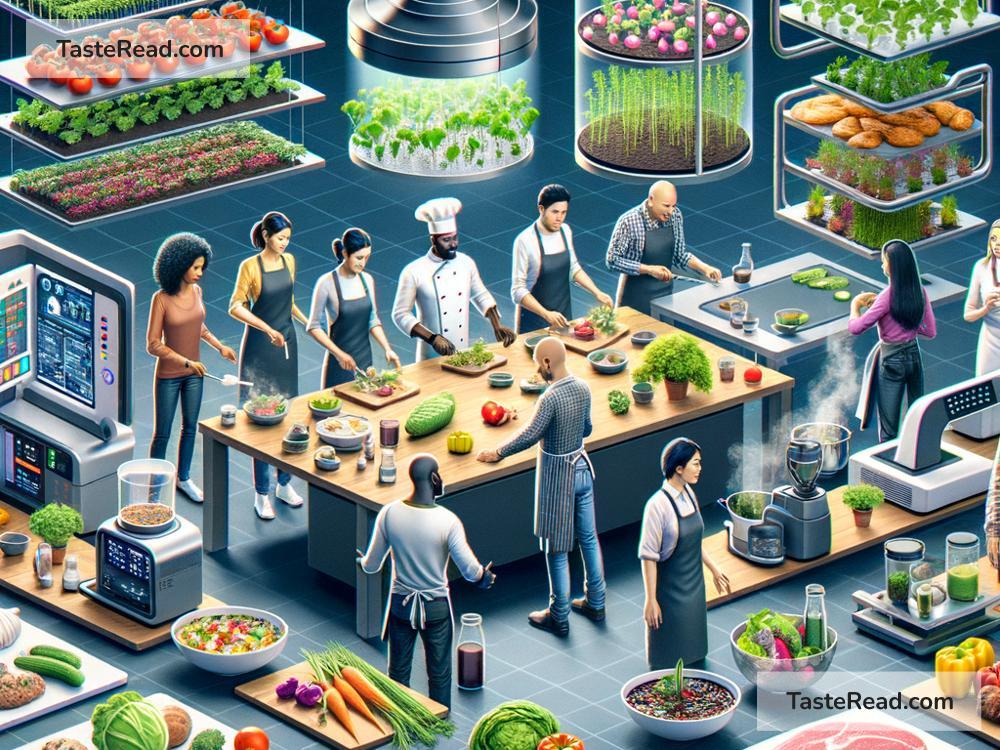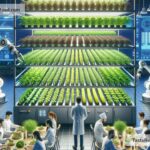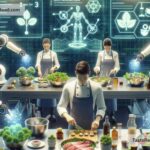The Future of Food and Collaborative Solutions: A Recipe for Change
Food isn’t just about survival; it’s the heart of communities, culture, and society. But as the world grows, so do challenges tied to how we produce, distribute, and consume food. Climate change, population growth, imbalanced food systems, and the environmental toll of agriculture mean we need new ideas to ensure food for everyone while protecting our planet. The future of food isn’t just about technology or farming—it’s about working together to build better solutions for healthier people and a healthier planet.
The Challenges of Modern Food Systems
Right now, food production is facing big hurdles. First, the demand for food is skyrocketing because the human population is expected to exceed 9 billion by 2050. Feeding that many people requires immense effort—and traditional farming might struggle to keep up.
Second, climate change is hitting farms hard. Unpredictable weather like floods, droughts, and heatwaves disrupt crops and livestock, making food production less reliable. Water shortages and soil depletion are also pushing agriculture to the edge.
Third, food waste is a silent problem in the system. Across the globe, one-third of all food produced gets thrown away, unused. That means resources like energy, water, and labor are wasted too. At the same time, 800 million people go hungry every day. Clearly, there’s something broken in how food moves from farm to plate.
Finally, agriculture itself contributes to environmental damage, including deforestation, greenhouse gas emissions, and water pollution. If we continue down the same path, we risk making the Earth’s problems worse, not better.
What Does the Future of Food Look Like?
To solve these problems, the future of food needs to be creative, sustainable, and inclusive. This means focusing on innovation, but also working together across industries, societies, and continents.
1. Technology in Food Production
The food industry is already witnessing incredible advances in technology. Vertical farming, where crops are grown indoors in stacked layers using hydroponics or aeroponics, uses less land, water, and energy. Lab-grown meat is being developed to offer protein without raising animals, reducing environmental strain. Precision agriculture uses sensors, drones, and AI to monitor crops and optimize resources, allowing farmers to grow more with less.
However, technology isn’t a one-size-fits-all solution. While futuristic tech is fascinating, it needs to be accessible to farmers of all kinds—whether they’re farming in high-tech cities or rural communities with fewer resources.
2. Climate-Resilient Practices
Adopting sustainable practices will be crucial for the food of the future. Regenerative farming, which restores soil health and captures carbon, is gaining attention as a way to reverse environmental damage. Growing more plant-based foods can reduce our reliance on resource-intensive livestock farming. Additionally, introducing crops that are resistant to drought, heat, and other climate extremes can help farmers adapt to the changing planet.
3. Reducing Waste and Improving Access
Fixing food systems also means wasting less and distributing food more fairly. Technologies like edible coatings can keep fruits and vegetables fresh for longer, while smarter logistics can ensure food isn’t lost in transportation. Governments, companies, and nonprofits can work together to channel surplus food to those in need or redirect it to create biofuels or animal feed.
More importantly, addressing inequality in food systems matters. Collaboration between organizations can ensure that rural farmers, underprivileged communities, and vulnerable groups have access to better tools, support, and affordable food.
Collaborative Solutions: The Key to Success
No single entity has all the answers to fix food systems. Collaboration is the magic ingredient for real change.
Collaborating Across Borders and Sectors
Governments, businesses, scientists, activists, and farmers must work together to tackle food issues from multiple angles. For example, policymakers can promote sustainable farming policies while scientists develop climate-resilient crops. Companies can support local farmers by sourcing products ethically and reducing their environmental footprint. Even consumers have a role: adopting mindful habits like reducing food waste, buying seasonal produce, and supporting eco-friendly businesses makes a difference.
Community Efforts
Solutions don’t always need to be large-scale. Local communities play a powerful role in shaping the future of food. For example, urban areas are embracing community gardens and rooftop farms for access to fresh produce. Food cooperatives are popping up where people join forces to grow, share, or sell food in sustainable ways. When individuals come together, they can create ripples of change.
Education and Awareness
Education is critical for empowering everyone to be part of the solution. Schools can teach kids about sustainable agriculture, businesses can offer consumers more transparency about how food is produced, and social media can spread awareness and inspire collective action. The more people understand the challenges and opportunities in the food system, the easier it becomes to find solutions.
A Shared Responsibility
The future of food will impact everyone, and so, solving these challenges is a shared responsibility. It’s about cooperation across regions and generations, recognizing that everyone has a role to play in building a system that works better.
While the challenges ahead are big, there is also immense opportunity. By investing in smarter, greener, and fairer systems—with technology, solutions for climate resilience, and community collaboration—the future of food can be more sustainable, nourishing, and just.
So the next time you sit down to eat, remember: every bite is connected to a global story. Together, we can rewrite that story for the better, ensuring that no one goes hungry and that Earth keeps thriving. The recipe for change is clear—we just need to cook it up, together!


